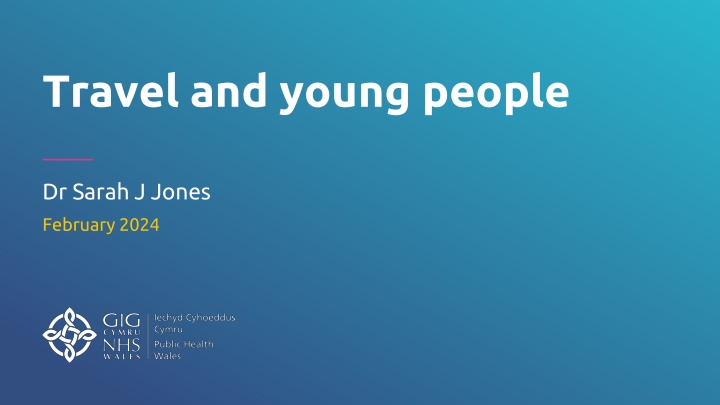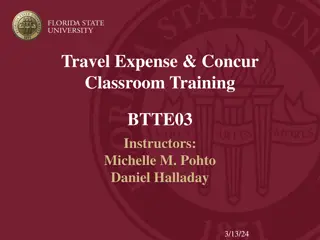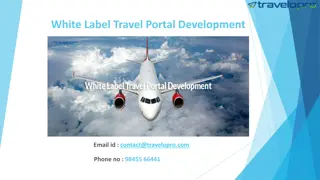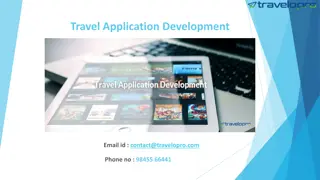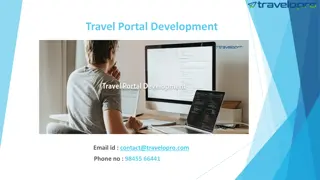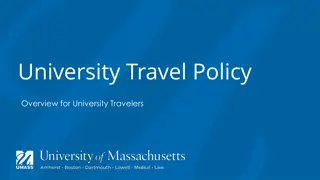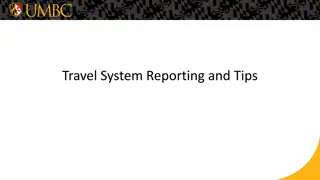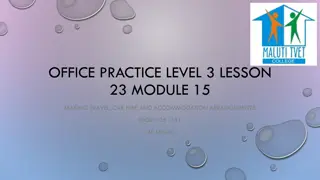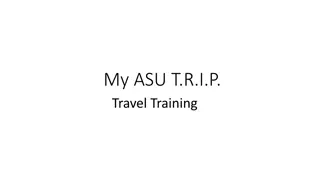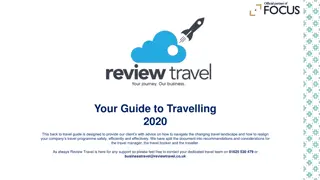Travel and young people
Dive into the world of travel and its impact on young individuals with Dr. Sarah J. Jones in February 2024. Discover insightful discussions and perspectives on the intersection of youth and exploration from this upcoming event.
Download Presentation

Please find below an Image/Link to download the presentation.
The content on the website is provided AS IS for your information and personal use only. It may not be sold, licensed, or shared on other websites without obtaining consent from the author.If you encounter any issues during the download, it is possible that the publisher has removed the file from their server.
You are allowed to download the files provided on this website for personal or commercial use, subject to the condition that they are used lawfully. All files are the property of their respective owners.
The content on the website is provided AS IS for your information and personal use only. It may not be sold, licensed, or shared on other websites without obtaining consent from the author.
E N D
Presentation Transcript
Travel and young people Dr Sarah J Jones February 2024
Climate emergency Motor vehicles significant contribution to atmospheric warming 2019 o 27% of UK emissions due to transport o 15% of UK emissions due to car and taxi journeys 2017 to 2019 data o 33.3% of all journeys are car journeys of less than 5 miles o 14% of all journeys are car journeys of less than 2 miles Short car journeys o Cold start (disproportionate effect on emissions and air quality) o Discourage physical activity by the rest of the community, encouraging more driving GDL why and how?
Welsh Youth Parliament Sustainable Ways 2/3 of young people are conscious of the environmental impact of their chosen mode of transport 74% would use public transport more if it was free Cycling is the least safe option Perception that encouraging more public transport use among young people would lead them to continue using it as adults GDL why and how?
What happens to travel behaviours once people can learn to drive? Average proportions of trips per person per year 2017 to 2019 60.0% 50.0% 40.0% 30.0% 20.0% 10.0% 0.0% 17-20 21-29 30-39 40-49 50-59 60-69 70+ Car / van driver Car / van passenger Active travel Public transport Other GDL why and how?
The problem - Young driver crash profile (2010-12) 17 to 19 year old drivers as a % of all 14.0% 12.0% 10.0% 8.0% 6.0% 4.0% 2.0% 0.0% England Scotland Wales England Scotland Wales England Scotland Wales England Scotland Wales Driving licences (pa) Crashes (annual avg) Casualties (annual avg) Fatalities (annual avg) GDL why and how?
Why not the UK? Just because it works in other places.. o Why would the UK be the first place it didn t work... The police are too busy to enforce it o ACPO have pledged to find a way It would penalise lots of law abiding teens o Model teens crash too It will hinder education / employment opportunities o In NZ 1-8% of teens said GDL hindered work o 25% of UK teens drive GDL why and how?
Why not the UK (2)? Restrictions are unfair Restrictions will not be complied with o Most people are law abiding More will drive without a licence o Cost of insurance surely a bigger threat Rural young people unfairly penalised o Suffer biggest burden of YD crashes GDL why and how?
Young driver risk factors Age Joy riders the irresponsible minority o Exuberance, risk taking, peer pressure, sensation and thrill seeking Inexperience o Psychomotor skills, hazard perception, judgment, decision making GDL why and how?
Benefits of GDL Expected reduction in annual KSI casualties from collisions involving a 17 to 19 year old car driver 27 45 361 433 Proportion of all regional casualties that involved a young car driver (17 19 years old) 16.2% 12.5% 11.6% 11.9% Expected reduction in all annual casualties from collisions involving a 17 to 19 year old car driver 296 299 3883 4478 Expected value of benefits ( m) 12.8 18.3 169.1 200.1 Country Wales Scotland England GB GDL why and how?
The solution Graduated Driver Licensing Opportunity to gain experience under conditions of reduced risk Intermediate phase o learner to full licence Permission granted to drive unsupervised o Permission not given for night time driving, carrying passengers, drinking any alcohol GDL why and how?
Does it work? 4 to 60% decrease in casualties among newly qualified drivers Ontario 62% decrease in 12am to 5am crashes California 40% decrease in teen passenger deaths / injuries Parents feel more empowered Teens feel less pressured into driving in situations that they are not comfortable with Cochrane review only positive effects GDL why and how?
Cochrane Review conclusions GDL is effective in reducing crash rates among young drivers, although the magnitude of the effect varies. The conclusions are supported by consistent findings, temporal relationship, and plausibility of the association. Stronger GDL programmes (i.e. more restrictions or higher quality based on IIHS classification) appear to result in greater fatality reduction (Russell et al., 2011). GDL why and how?
Kinnear et al (2013) The evidence that Graduated Licensing improves safety is compelling. Driver licensing in GB should be based on a strong Graduated System GDL why and how?
What happens to travel behaviours once people can learn to drive? Average proportions of trips per person per year 2017 to 2019 60.0% 50.0% 40.0% 30.0% 20.0% 10.0% 0.0% 17-20 21-29 30-39 40-49 50-59 60-69 70+ Car / van driver Car / van passenger Active travel Public transport Other GDL why and how?
Now GDL Time Young driver update
